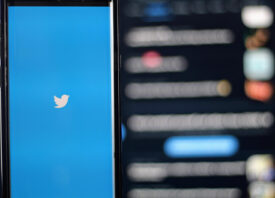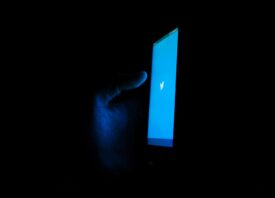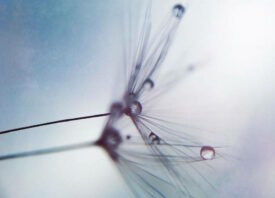Search this site
Alien Worlds Revealed in Abstract Macro NFT Photos


“There’s not much room to set up a studio in my house, so I occupied the kitchen,” the macro photographer Matt Doogue remembers. While most of his projects have brought him into the wild in search of arthropods, Spectrum Lobes had him working late into the night, photographing a different subject altogether: soap bubbles.
“I would have lights all over the table and different bubble mixtures waiting to go,” he tells me. “The floor was slippery–bubbles everywhere. It was like a mad lab, and I was this crazy abstract artist trying to capture art that would only be here for a few seconds.”
At the time, Doogue didn’t expect the photographs would become an NFT phenomenon. “Photography NFTs were just getting going, and macro was, and is still in some ways, flying under the radar,” he says. But he was having fun experimenting with the idea of generative art. While pioneering crypto projects such as Art Blocks and Autoglyphs were using algorithms to create works of art, Doogue was doing something similar with bubbles.
He could control some factors, sure, but others were randomized, meaning that no single composition could ever be recreated, even if he tried a billion times. “With the bubbles, art was naturally being generated,” he explains. “I remember the first time I set my camera up. I was looking through that viewfinder at around x7 magnification, watching this alien-like world forming in front of my eyes.
“The colors, shapes, and textures all formed in different and crazy ways. The slightest change of breeze or light would reveal new creations. I was mesmerized.” With time, he experimented more, trying everything from color effect gels to new and daring homemade concoctions.
NFTs are built around the idea of scarcity, with blockchain technology allowing us to create one-of-a-kind digital artworks. In many ways, Doogue’s photographs were a natural fit. He worked for hours, shooting until he achieved an image that felt rare, elusive, and original. He also took it a step further: when each NFT sold, he deleted the original file from his computer, making the NFT doubly special.
It’s just one of the factors that make Spectrum Lobes feel especially personal–perhaps paradoxically, as the work exists primarily in the digital world. Another is the title, which deliberately evokes comparisons to the human brain. “I began to realize that these bubbles, in a way, are similar to us,” he admits. “Each human in this world is unique. We all have our own unique features and ways of life and we can never be replicated (yet) and each one of these 2mm bubbles is the same, each with its own unique patterns and features.”
Doogue has also created signed prints for his NFT collectors, so they can have something to hold in their hands. He’s offered raffles for special prizes, and he’s used the project as a way to give back, with 10% of profits donated to an Autism charity after the collection sold out. Finally, he paired each picture with a short written message of hope, a nod to his passion for mental health advocacy.
Perhaps more than anything, Spectrum Lobes serves as a reminder to celebrate the moments we so often overlook, even on the tiniest scale. In the age of information overload, they inspire us to slow down and cherish what makes us human. The artist still finds himself marveling at bubbles in his everyday life, whether he’s washing the dishes or watching his daughters play with bubble wands. He tells me, “The patterns are so unique, vivid, full of life, and then POP! Gone, never to be seen again.”








All images © Matt Doogue



